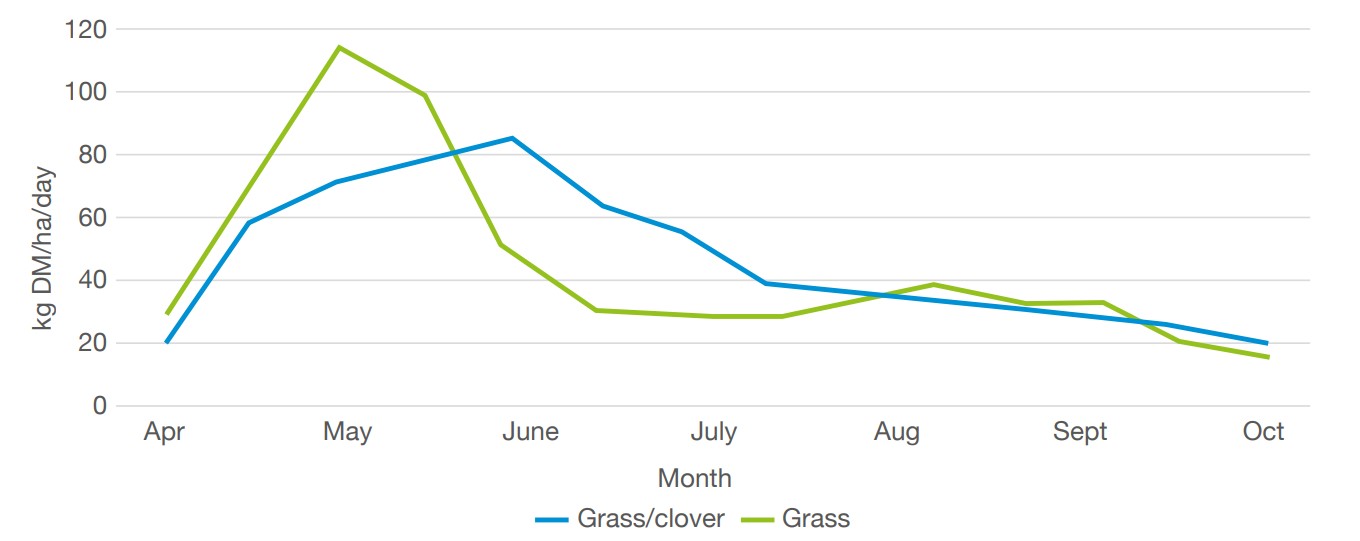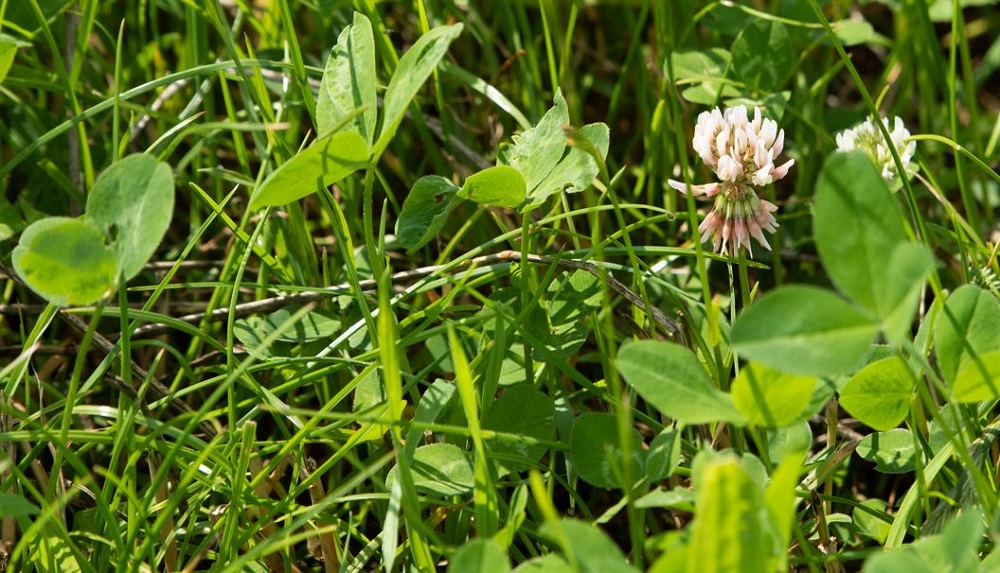With soil temperatures on the rise, so is clover
Thursday, 30 March 2023
This article explores the role of white and red clovers in sustainable grasslands. It also features top tips to help you manage clovers for grazing and silage.
In the coming weeks, start to put plans in place to ensure you get the most from your clover.
The benefits of white clover tend to occur from May onwards as the content of white clover in the swards increases, so while soil temperatures are rising makes now the perfect time to review and plan for this season.
Clover can reduce input costs
Clovers play a significant role in sustainable UK production for several reasons.
While feed and fertiliser prices remain high, having a dependable source of homegrown protein, such as clover, offers some protection from ever-rising input costs.
Their ability to take nitrogen (N) from the air and convert it into a form that can be used by plants reduces the need for chemical fertilisers.
This not only reduces the environmental impact of farming but also reduces the cost of inputs for farmers.
For every 10% increase in the amount of clover in the sward, the crude protein (CP) content of the first-cut silage increases by 1%.
White and red clovers are widely used in UK farming systems; they each have unique characteristics and benefits.
Including clover in pasture seed mixes can help improve the nutritional quality of the forage available to livestock, which can lead to improved weight gain, milk production, and reproductive performance.
However, like all crops, they need to be managed correctly.
Flexibility and willingness to adapt to the conditions are important when managing grass-white clover swards.
Good grazing management is also important for increased persistence and production of white clover in grazed swards.
When managed correctly, clover can also be used to extend the grazing season as it can continue to grow and produce forage late into the season and improve the overall productivity of the pasture.
Clover is particularly valuable during the mid-to-late season when grass growth starts to fall away.
Grass growth curve pattern

Clovers can also help support pollinators and other beneficial insects, improving overall ecosystem health and biodiversity.
This is especially important in the face of declining pollinator populations, which can significantly impact food production and ecosystem function.
White clover
White clover is a perennial legume that is often included in grassland mixes to improve soil health and fertility.
It has a shallow root system that can help break up compacted soil and improve drainage, which can help improve the growth and yield of grasses.
It is also a valuable source of protein for livestock and, therefore, can be beneficial to include in pasture mixes.
Top tips for managing white clovers
- Flexibility and willingness to adapt to conditions are important when managing grass and white clover swards
- Make sure swards are grazed frequently. This is important for the persistence and production of white clover in swards
- Keep grass at 4–6 cm over the winter to protect stolons from frost damage
- Assess stolon growth in the spring and treat the stolons as weak and vulnerable – avoid poaching as this will cause stolon damage
- If clover content is low, prevent grass shading out the clover by grazing or cutting the sward
- If clover content is too high, use intensive grazing or strategic nitrogen use to increase grass growth
Red clover
Red clover is another perennial legume commonly used in UK farming systems.
It has a deeper root system than white clover and can help improve soil structure and reduce erosion.
It is a valuable source of forage and can be used as a high-quality hay or silage crop.
It can also be used as green manure, providing important nutrients and organic matter when incorporated into the soil.
Red clover/ryegrass swards can produce 10–14 t DM/ha per year.
Red clover tends to fix between 150–250 kg N/ha per year.
Top tips for managing red clovers for silage
- Apply phosphate, potash and magnesium as recommended for pure grass swards. Clover is more responsive to potash than grass, so it may benefit from a small application of potash at index 2–
- Do not apply nitrogen, except at establishment
- Avoid excess wheelings from heavy machinery and keep poaching by animals to a minimum
- Take 2–3 cuts (4 maximum) at 6–8-week intervals after the first cut (15 May – 2 June). This should yield 13–14 t DM/ha on fertile sites, or 10 t DM/ha on upland sites
- For high protein content, cut when clover is in the late bud stage or in early bloom for lower protein content
- Do not use a mower conditioner, and make sure to chop the crop
- Ensile at 30% DM (dry matter) to minimise wilting losses
- Height for all silage cuts is no lower than 7–8 cm
- Grazing height of silage aftermath should be maintained above 6 cm, and the crop should be overwintered at 4–6 cm
Top tips for managing red clovers for grazing
- Avoid grazing in wet or damp conditions to limit bloat and reduce the risk of poaching
- For red clover and grass swards, there may be some advantage to applying a small amount of nitrogen (up to 50 kg N/ha) in the early spring, if the grass is nitrogen-deficient
Further information
 AHDB
AHDB



